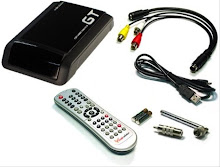A tuner is an adjustable device which passes one radio frequency, or band of frequencies, and excludes others, by using electrical resonance. The simplest tuner consists of an inductor and capacitor. Combined with a detector, also known as a demodulator, it becomes the simplest radio receiver, often called a crystal set.
Tuners can be either stereo or mono, and are available for TV, FM, and AM signals.
Typically, AM and FM tuners are sold with built-in amplifiers and/or loudspeakers, and this device is referred to as a receiver. However, standalone stereo FM tuners are sought after for audiophile and TV/FM DX applications, especially those produced in the 1970s, when standards of quality were higher before plastic replaced metal. A few 1970s tuners feature now-deprecated Dolby noise reduction for FM broadcasts.
VHF/UHF TV tuners are rarely found as a separate component; however cable boxes serve as a separate tuner, and have channel 3/4 outputs so they can serve as a cable-ready emulator for TVs that aren't cable-ready, and also they sometimes have composite; and even S-video outputs so they can be used on composite monitors that do not have a TV tuner, or ones whose tuner is not working. They are usually bundled with a monitor, VCR, and/or PVR. However, they do exist for use by members of the television industry, and may be purchased on eBay.
TV tuners are also installed on PCI computer expansion cards (or in USB device, or even as a part of video card), together with a DSP, allowing a personal computer to display and/or capture television channels. A number of earlier models were stand-alone tuners, designed to deliver TV picture through a VGA connector. This allowed viewing television on a computer display, but, of course, did not allow recording programmes by the PC. See TV tuner card for more information about computer-designed TV tuners.

Tuner (radio)
Subscribe to:
Post Comments (Atom)
Labels
- ATSC tuner (1)
- Cable CARD Tuner (1)
- Dvico Fusion Dual HDTV DVB-T Tuner (1)
- Fusion HDTV (1)
- HDTV (2)
- HDTV PC Tuner Guide (1)
- HDTV Receiver (1)
- HDTV Tuner (2)
- HDTV Tuner Cards (2)
- HDTV Tuner Review (1)
- How an ATSC Tuner Works (1)
- New Technology (1)
- Samsung (1)
- samsung hdtv tuner cards (1)
- The Best HDTV Tuner for Your PC (1)
- Tuner (radio) (1)
- What is HDCP? (1)
0 comments:
Post a Comment